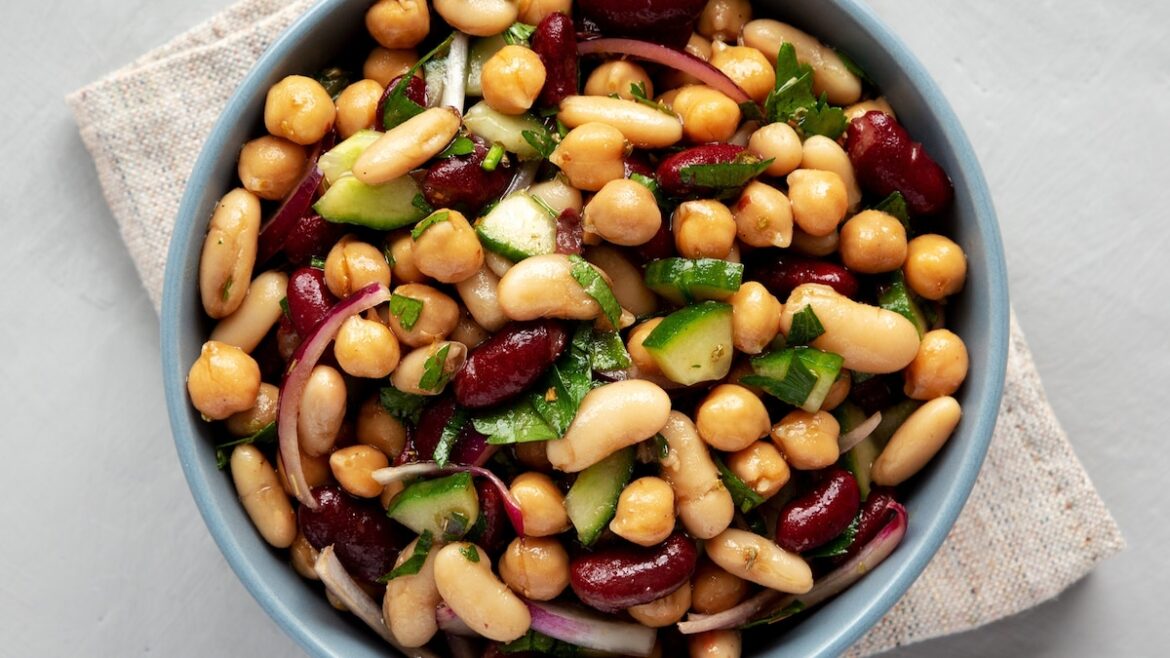What should you put—or avoid—in your salad?
When it comes to dense bean salads, there’s no one-size fits all. The good news: there are thousands of varieties of beans, and you can’t really go wrong.
“They’re all healthy, and if you can mix a couple together—wonderful,” Kendall says. Start with a variety of beans, and add some vegetables, olives, other plant-based products, and a bit of cheese, he suggests. “That’s a very healthy meal.”
For new dense bean salad eaters, Chou recommends starting simple with one kind of bean, a vegetable, and a dressing that could be as basic as oil and vinegar. “This salad is so versatile you can add almost any ingredients you have or leftover veggie odds and ends,” she says. Going for color can be a good strategy. “Colorful fruits and vegetables contain phytonutrients, which give them their colors and health promoting properties.”
Chou personally likes to experiment with soybeans, adzuki beans, mung beans, garbanzo, and black beans, usually pairing two with “something crunchy like cucumber or bell peppers, a root vegetable like sweet potato or carrots, vegan feta or shreds, and a grain like rice, quinoa, noodles, tortillas, or homemade croutons.” Chou often adds a vinaigrette or creamy dressing with tahini or peanut as a base—all topped off with chili oil. For the meal-preppers, using heartier options like kale and cabbage, or simply adding in the leafy greens last, can help “ensure they’re nice and crisp.”
For the health conscious, Glenn recommends ingredients that are high in good fats and low in sodium. For example, swap out the deli meats for high-protein nuts or seeds, and use olive or avocado oil as a dressing base over creamier dressings, which often use mayonnaise or cream as a base instead. Also, “you can look for low sodium versions of canned beans or make sure you rinse them really well before you put them on the salads,” she says.

